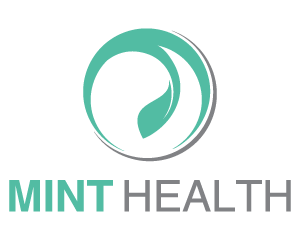Celery Juice.... Trend? Hoax? Beneficial?
Fad diets and popular cure-all’s circulate social media and the news daily. The most recent health trend, “cure-all” is celery juice! Many have claimed it is the only thing that has helped them to lose weight, lower cholesterol, heal skin issues, lower inflammation, lower blood pressure, fight infections, etc! While I do not doubt the phytonutrient power within celery or the benefits, I do not believe that it alone will heal all. Do I believe that it has been beneficial to some people’s health journey? Sure! But is it as heroic as it is played out to be???
Is Celery Juice the cure all?
Wouldn’t it be awesome if it were that simple?!? Unfortunately, there is no such thing! There is not a single cure all for all things and nothing replaces the power of phytochemical diversity. You may recall from previous articles about the phytonutrient spectrum and how smaller quantities of a variety of foods are far more beneficial than large quantities of a single/few items over and over! This is still very true. We need the entire spectrum to assure balance for functionality! In fact, celery juice along with a well-balanced diet full of variety would be wonderful for most. However, it may not be for everyone… (We will talk about this in another section below)
Are there wonderful nutritional components, benefits, and healing properties in celery?
Absolutely! Celery is rich in vitamin K, vitamin C, potassium, folate, manganese, calcium, riboflavin, magnesium, and vitamin B6. It contains antioxidant compounds which fight free radicals to protect our cells against damage such as caffeic acid, p-coumaric acid, ferulic acid, apigenin, luteolin, tannin, saponin, and kaempferol. All the nutrients contained in celery bring about a force of healing power in protecting the body from inflammation and disease.
Two of the awesome power house compounds in celery:
1) Apigenin is a flavonoid found in celery. It has been demonstrated to be a potent compound with multiple mechanisms of action. To name a few:
ANTI-CANCER- Apigenin has demonstrated many chemo-preventive and/or anticancerogenic properties. Studies show it could be a useful compound to prevent proliferation and migration of cancer cells as well as cancer stem cells.
NEURO-PROTECTIVE- Apigenin may inhibit the development of neurodegenerative diseases. Anti-amyloidogenic properties and may delay the onset of Alzheimer’s and slow its progression.
DETOX SUPPORTING- May help to flush toxins by supporting the liver.
ANTI INFLAMMATORY- Can be especially effective for those with auto-immune conditions.
Other foods that contain Apigenin- onions, parsley, oranges, thyme, sweet red pepper, chamomile tea
2) P – coumaric acid is a polyphenol found in celery. It has properties that help reduce intestinal absorption of carbohydrates, modulates enzymes involved in using glucose, and helps you process glucose better so that your pancreas does not have to work so hard. P – coumaric acid gets absorbed in our gastrointestinal tract, boosts our flora there, helps us control our blood sugar, gets passed through our liver, where it helps us detoxify, then out through the kidneys, helping filter all the toxins out of our body!
Other foods that contain P-coumaric acid- dates, tomatoes, navy beans, peanuts, carrots, basil, and garlic.
Is celery juice for everyone?
Not exactly. You can have too much celery juice. Just like you can have too much of anything. Furthermore, what works for someone, may not work for the next. It is important that while trying any new health technique, that you are working closely with your health professional to monitor your medical history and health needs.
We know that food is powerful because Food is Medicine! When something is juiced, nutrient compounds are increased. If you think about it, you will never just sit and eat an entire bunch of celery in one setting day after day. Certain compounds in repeated large quantities could potentially become harmful or create further imbalance for some with certain health needs/conditions. For others, they may do just fine.
What’s potentially harmful?
Psoralens- a toxin from a common fungus called pink rot that infects celery (as well as fennel, parsley, and parsnip) and discolors its stalks. Potentially carcinogenic.
Bergapten and Xanthotoxin- “photomutagenic” and “photocarcinogenic” properties which may cause a toxic dermal (skin) reaction when the person consuming celery juice is exposure to ultraviolet A rays (UVA)—sensitizing your skin to the harmful effects of UV radiation.
Animal studies have shown that the juices from both celery and parsley downregulate cytochrome P450 (CYP450) which is important to Phase I liver detoxification. This could cause a backup of toxic metabolites, which are bio transformed/activated in Phase I—and therefore, Phase II detox, which conjugates toxicants to render them water soluble for excretion, may not be able to keep up. Two words- toxin overload!
Do I personally drink celery juice?
I do from time to time because it makes me feel good, I like it and leaves my skin super hydrated! I am also aware of all the other heroic plant foods out there and eat them in abundance with variety, so I am not overdoing on just one vegetable!
If you have a strong food-body connection and are well underway in your own health journey, then a celery juice here and there might also be enjoyable for you! Just remember, to also EAT THE RAINBOW!
Be Well,
Brittany Booth Martino, CHC
